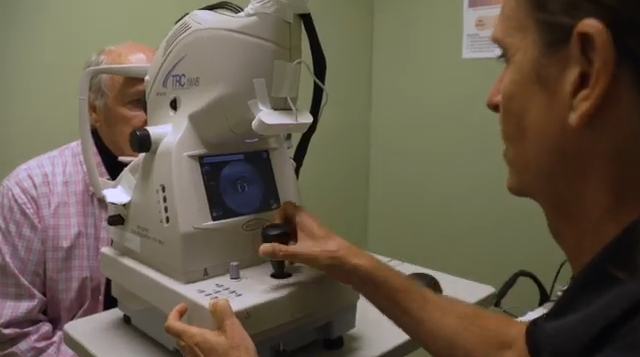BOSTON, Mass. (Ivanhoe Newswire) – When you hear “melanoma,” you probably think skin cancer, since melanoma is a type of cancer that develops in the cells that produce melanin – the pigment that gives skin its color. But our eyes also have these melanin producing cells and can develop melanoma. Now, some of the top centers in the U.S. are using the power of protons to kill the ocular cancer and save the eye.
It might not be visible to the untrained eye, but your ophthalmologist might uncover a spot or freckle that could be a sign of ocular melanoma — cancer of the eye.
“Ocular melanoma, historically, was treated by enucleation, meaning the removal of the eye,” says Mass. General Cancer Center radiation oncologist, Helen Shih, MD, who has an expertise in proton therapy.
But for some patients, that may no longer be the case.
Traditional radiation delivers X-rays to the tumor but the radiation can go beyond the tumor and damage healthy tissue. Proton therapy delivered radiation delivers a beam of protons that stops at the tumor.
Dr. Shih explains, “We typically go through the white of the eye, which is fairly resistant to the radiation. It treats the tumor and the beam stops there. So, there’s no radiation or virtually no radiation delivered to the brain.
Dr. Shih says it’s important to catch ocular cancer early, before it spreads. When treated early, proton therapy can cure almost 95 percent of the ocular cancers.
“I would say the overwhelming majority of people that we treat, granted they are selected carefully, they do not only save their eye, but frequently we save their vision,” Dr. Shih emphasizes.
While proton therapy has been used for years for the treatment of other cancers, like brain cancer, breast cancer, and lung cancer, Dr. Shih says there are only a handful of hospitals and academic institutions across the U.S. using proton therapy for ocular melanoma.
Contributors to this news report include: Cyndy McGrath, Producer; Kirk Manson, Videographer; Roque Correa, Editor.
To receive a free weekly e-mail on medical breakthroughs from Ivanhoe, sign up at: http://www.ivanhoe.com/ftk
Sources:
MEDICAL BREAKTHROUGHS
RESEARCH SUMMARY
TOPIC: PROTON THERAPY TREATS OCULAR CANCER
REPORT: MB #5162
BACKGROUND: Ocular cancer is a rare form of cancer that starts in another part of the body before overtaking the eyes. There are often no warning signs or early symptoms if the cancer is small or not close to the vital eye structures. Eye cancer is most treatable when detected early. There are around 3,500 new cases every year in the United States. The most common cancers in the eyes normally do not start in the eye but in a different region of the body. They have been known to begin in the breasts and lungs and then spread. Optometrists can sometimes uncover spots in the eye that can be early signs of ocular melanoma. The most common cancer of the eye is ocular melanoma and often starts in the part of the eyeball known as the uvea. The uvea is the layer between the sclera and the retina.
(Sources:
https://www.aao.org/eye-health/diseases/eye-cancer
DIAGNOSING: Doctors will often perform an eye exam using equipment called a silt lamp that produces narrow and intense beams of light and an indirect ophthalmoscope which shows a large view of the inside of the eye. The doctor is looking for a dome shape or mushroom shape that is elevated and flat surfaced. This allows the doctor to get further information about a tumor. They will then follow with an ultrasound. Tumors on the surface can be treated with chemotherapy, targeted therapy, radiation, or surgical excision. A common treatment for eye cancers is brachytherapy. This form of therapy is done with a plaque made from gold. There is a 95 to 98 percent success statistic for gaining local control of uveal melanoma from using brachytherapy.
(Source:
TREATMENT: Proton therapy is delivered through a large machine and give beams of protons that stop directly at the tumor. This is different from previous radiations that go beyond the tumor and potentially damage healthy tissue in the eye. When it is treated early, proton therapy can cure 90 percent of ocular cancers. While proton therapy has been used before for brain, breast, and lung cancers, only a handful of hospitals across America are using proton therapy for ocular melanoma.
(Source:
FOR MORE INFORMATION ON THIS REPORT, PLEASE CONTACT:
Katie Marquedant
(617) 726-0337
If this story or any other Ivanhoe story has impacted your life or prompted you or someone you know to seek or change treatments, please let us know by contacting Marjorie Bekaert Thomas at mthomas@ivanhoe.com





